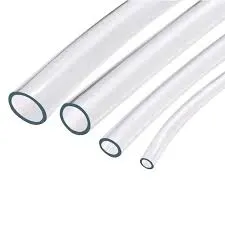Aug . 06, 2024 11:57 Back to list
High-Density Polyethylene Double-Wall Corrugated Pipes for Efficient Drainage and Stormwater Management Solutions
The Advantages of HDPE Double Wall Corrugated Pipe
High-Density Polyethylene (HDPE) double wall corrugated pipes have emerged as a preferred choice in various engineering and construction applications. With their unique construction, these pipes offer numerous benefits that make them suitable for drainage systems, sewer lines, and other infrastructural projects. This article delves into the features and advantages of HDPE double wall corrugated pipes, shedding light on their significance in modern construction.
Structure and Design
HDPE double wall corrugated pipes are engineered with two distinct layers. The outer layer features a corrugated design, which provides strength and rigidity, while the inner layer offers a smooth surface to facilitate efficient fluid flow. This dual-layer structure not only enhances the pipe's load-bearing capacity but also mitigates the risk of blockages, making these pipes particularly beneficial for drainage and sewage applications.
Durability and Resilience
One of the most acclaimed attributes of HDPE pipes is their exceptional durability. These pipes are resistant to a variety of environmental stressors, including soil chemicals, bacteria, and extreme weather conditions. Unlike traditional materials such as concrete and PVC, HDPE does not corrode or degrade over time, ensuring a longer service life and reduced maintenance costs. This resilience makes HDPE double wall corrugated pipes a reliable choice for both above-ground and underground installations.
Lightweight and Ease of Installation
Another significant advantage of HDPE double wall corrugated pipes is their lightweight nature. This characteristic simplifies handling and installation processes. Construction teams can transport these pipes easily, reducing labor costs and installation time. Moreover, the flexibility of HDPE allows for adjustments during installation, accommodating various site conditions and reducing the need for extensive groundwork.
hdpe double wall corrugated pipe

Hydraulic Efficiency
The smooth inner surface of HDPE double wall pipes ensures high hydraulic efficiency. The design minimizes friction loss, enabling efficient water flow and reducing the risk of blockages. This property is particularly crucial for drainage systems, where maintaining optimal flow rates is essential to avoid flooding and water accumulation in urban areas. The high hydraulic capacity of these pipes ensures that they can effectively manage large volumes of water, which is a vital factor in infrastructure planning.
Environmental Benefits
As sustainability becomes increasingly important in construction, HDPE double wall corrugated pipes stand out for their eco-friendly credentials. HDPE is 100% recyclable, contributing to a circular economy. Additionally, using these pipes can reduce the overall environmental footprint of construction projects, as their longevity and durability mean fewer resources are consumed over time. Moreover, since they are often manufactured using energy-efficient processes, opting for HDPE can align with green building initiatives.
Cost-Effectiveness
While the initial investment in HDPE double wall corrugated pipes may be comparable to or slightly higher than traditional materials, the long-term savings they offer can be substantial. Their durability translates to lower maintenance and replacement costs, while their efficient installation can shorten project timelines, leading to lower labor costs. Over time, these factors contribute to a more cost-effective solution in the realm of drainage and sewerage management.
Conclusion
In conclusion, HDPE double wall corrugated pipes represent a remarkable advancement in piping technology. Their robust design, durability, and hydraulic efficiency make them an optimal choice for various applications, ensuring long-term performance and sustainability. As the construction industry continues to evolve, the adoption of HDPE pipes is likely to increase, reflecting a commitment to innovation and environmental stewardship. Whether for urban drainage systems or agricultural applications, HDPE double wall corrugated pipes are undoubtedly a valuable asset in modern infrastructure development.
-
Durable Glossy PVC Rigid Sheet | Premium High-Shine Panels
NewsAug.26,2025
-
Durable PP Rigid Sheet: Lightweight, Chemical Resistant Solutions
NewsAug.21,2025
-
PVC Grey Sheet for Extraction: Chemical Resistant & Durable
NewsAug.19,2025
-
Durable PVC Pipe Fittings for Plumbing & Irrigation Needs
NewsAug.18,2025
-
HDPE Steel Belt Reinforced Spiral Corrugated Pipe | High Strength
NewsAug.17,2025
-
HDPE Pipe Fittings: Durable, Leak-Proof Solutions
NewsAug.16,2025

